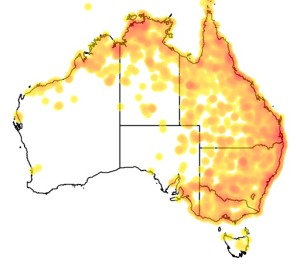�
�
Ardea (Ardea) intermedia
Intermediate Egret
Kingdom
Animalia
Phylum
Chordata
Class
Aves
Order
Ciconiiformes
Family
Ardeidae
Genus
Ardea
Species
Ardea (Ardea) intermedia
Colours
Distinguishing features
This species, as its scientific name implies, is intermediate in size between the Great Egret and smaller white egrets like the Little Egret and Cattle Egret.
It has all-white plumage, generally dark legs and a thickish yellow bill. Breeding birds may have a reddish or black bill, greenish yellow gape skin, loose filamentous plumes on their breast and back, and dull yellow or pink on their upper legs (regional variations). The sexes are similar. (Wikipedia)
Size
- From 56 cm to 72 cm (Length of specimen)
Wingspan
- Up to 115 cm
Synonyms
Similar taxa
-
Animalia:
Great Egret (species: Ardea (Ardea) alba)
The Great Egret is differentiated from the Intermediate Egret by the gape, which extends well beyond the back of the eye in case of the Great Egret, but ends just behind the eye in case of the Intermediate Egret. The non-breeding colours are similar, but the Intermediate is smaller, with neck length a little less than body length, a slightly domed head, and a shorter, thicker bill. The Great Egret has a noticeable kink near the middle of its neck, and the top of its longer bill nearly aligns with the flat top of its head. Close up, the bare skin of the Great Egret's gape line extends in a dagger shape behind the eye, while the Intermediate's is less pointed and ends below the eye. The Intermediate tends to stalk upright with neck extended forward. The Great is more patient, often adopting a sideways-leaning "one-eyed" stance. (Wikipedia) -
Animalia:
Little Egret (species: Egretta garzetta)
Apart from size, Little Egrets differ from Intermediate Egret because they have yellow-soled feet and black bills. They often run after fish in shallow water. Breeding birds have long nuptial plumes on the back of their heads. (Wikipedia)
Distribution
Distribution and habitat preferences
It is a resident breeder from east Africa across the Indian Subcontinent to Southeast Asia and Australia. (Wikipedia)
Diet
It stalks its prey methodically in shallow coastal or fresh water, including flooded fields. It eats fish, frogs, crustaceans and insects. (Wikipedia)



